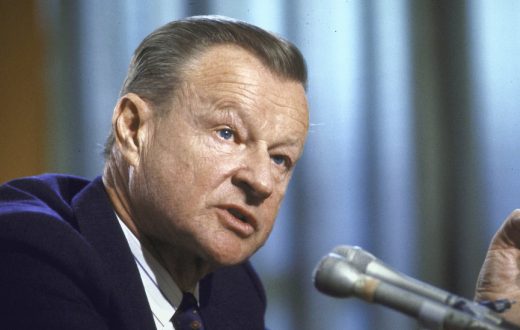Introduction
The Heartland theory is a geopolitical concept which analyzes the political and economic success of the world’s regions by geography. The theory was hypothesized by 20th-century British geopolitical scholar, Halford Mackinder in his paper to the Royal Geographical Association entitled, “The Geographical Pivot of History” in 1904.
According to the theory, the core of global influence lies in what is known as the Heartland, a region of the world situated in Eurasia due to its sheer size, a wealth of resources, and a high population. Mackinder stated that the nation in control of the Heartland had the potential to “command the world” but also highlighted the great natural barriers which surrounded the Heartland. The theory had great political ramifications, and some historians believe that the theory was the inspiration behind Germany’s invasion of Russia during the Second World War.
Who is Mackinder ?
Halford Mackinder was a 20th-century geopolitical scholar who is attributed for writing the Heartland Theory. Halford Mackinder was born on February 15th, 1861 in Gainsborough, England and received his education at the Epsom College and later at Christ Church in Oxford, where he received his biology degree in 1883. Mackinder had a liking for Geography and was a proponent of having physical geography and human geography taught as one subject.
Mackinder was a founding member of the Geographical Association and served as the association’s chairperson between 1913 and 1946. In 1904, Halford Mackinder presented a paper to the Royal Geographical Society which was titled “The Geographical Pivot of History” and in it he introduced the Heartland Theory and explained it in depth. Mackinder died on March 6th, 1947, aged 86 years. The scholar left a lasting legacy as he introduced geopolitics to the world and is commonly labeled as the “father of geopolitics.”
The world Regions
In the “Geographical Pivot of History,” Halford Mackinder stated that world’s terrestrial surface was segmented into three basic geographical regions which are the outlying islands, the offshore islands, and the World-island. Halford relied on the interlinking of continents to come up with the dichotomy whereby interlinked continents were classified in a common region. According to Mackinder, the World-Island was made up of Europe, Asia, and Africa.
World-Island was the largest of the three regions, accounting for two-thirds of the earth’s terrestrial surface and home to about 87.5% of the world’s population. World-Island was also the richest of the three world regions in resources. The islands of Japan and the British Isles were categorized under the offshore islands. The outlying islands were made up of the Americas as well as Australia. Halford stated that the Heartland was made up of the territory originally occupied by the Russian Empire and by the Soviet Union soon after that (except for the Kamchatka Peninsula).

Significance of Eastern Europe
Eastern Europe is of critical importance in the Heartland Theory. In the “Geographical Pivot of History,” Mackinder stated that “who rules East Europe commands the Heartland.” While the Heartland has as much as 50% of the resources in the world, the region is largely under-developed, and its residents live in relatively poor conditions. Countries of Eastern Europe enjoy proximity to the Heartland and therefore are in literally the best position to take advantage of its resources.
However, the Heartland has been under Russian authority for hundreds of years and so to capture the Heartland, countries needed to prevent the expansion of Russian influence in the Heartland at the very least. Mackinder believed that countries from other world regions (the offshore islands and the outlying islands) were hindered from making a successful invasion in the Heartland by the geographical barriers surrounding the Heartland (the Carpathian Mountains to the west, the Hindukush Ranges to the South, and the Altai to the east and the Baltic Sea to the north). Only countries in Eastern Europe were seen as potential candidates of launching a successful invasion in the Heartland.
Criticism
The Heartland Theory is seen by critics as impractical in a modern perspective. During the time of the writing of the Heartland Theory, most of East Europe and Russia did not have an inch of road or railway network, making the belief of conquering the Heartland logistically impossible. However, the Soviet Union would later invest heavily in road and rail transport in the 20th Century, resulting in thousands of miles of rail tracks and roads and therefore rendering Mackinder’s argument as baseless.
Mackinder wrote down the theory in the turn of the 20th century, a period when modern technological advancements were still in their infancy. Mackinder did not consider the effect of modern technology on his theory. For instance, the writer claimed that the existing natural barriers would protect the Heartland from foreign invasion. However, modern warfare features long-range missiles and fighter jets which easily cancel out the “natural barrier.” History has also proven the flaws of the theory. The Mongol Invasions which swept through the Heartland did not have the aforementioned modern weapons but were nonetheless able to conquer vast regions of the “impenetrable” heartland. Mackinder’s map of the world is also seen as inaccurate as it depicts the Arctic Sea to be considerably larger than it is.




